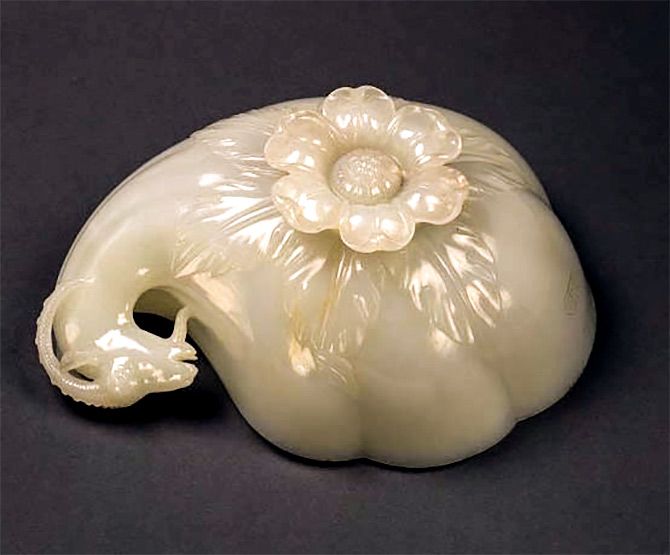'Does a thousand-year-old sculpture worshipped in a thriving religion belong to a foreign museum or the temple from which it was extracted?' Congress MP Shashi Tharoor asked angrily.
'They legitimately belonged to India and people of past, present and future generations are interested in re-possessing them,' a central information commissioner declared last month.
The second segment of Vaihayasi Pande Daniel's special report on Indian treasures in Western museums.
- PART I: Give us our gods back!

British MP Keith Vaz stated publicly a few years ago: 'Pursuing monetary reparations (for Britain's rule of India) is complex, time-consuming and potentially fruitless, but there is no excuse for not returning precious items such as the Koh-i-Noor diamond, a campaign I have backed for many years.'

After the site was first spotted by a local schoolteacher it was excavated by a French archaeologist and later a British archaeologist between 1926 and 1931. Photograph: Kind courtesy Fletcher Fund, 1928/www.metmuseum.org
In early June, Sridhar Acharyulu, commissioner, Central Information Commission, responding to an RTI request enquiring what the Indian government is doing to have its historically-stolen cultural items repatriated passed an order stating: 'Deep sentiments are associated with these heritage objects as some of them are religiously considered sacred such as marble Vagdevi of Bhoj Raj, Buddha's statue from Sultanganj, Nassak diamond called 'eye' of Shiva, and objects with high historic value like Koh-i-Noor, Tipu's sword, ring and mechanical tiger etc.'
'They legitimately belonged to India and people of past, present and future generations are interested in re-possessing them.'

A bodhisattva is a potential or future Buddha on the journey to enlightenment but who is helping people find nirvana (salvation). Photograph: Kind courtesy va_va_val/Wikimedia Commons
Is it so easy to turn the clock back?
National boundaries of many of the world's nations are relatively new, including India's.

Stolen treasures, like those that occupy several galleries at the British Museum or the Victoria and Albert Musuem belonged to kingdoms and empires that no longer exist and were stolen by members of empires that are extinct.
How will justice then be served?

Says Kavita Singh, professor of art history at the School of Arts and Aesthetics, Jawaharlal Nehru University, Delhi, "My views are counter to most popular opinion on this matter. Let me quote (German philosopher and theorist) Walter Benjamin's On the Concept of History: 'Whoever has emerged victorious participates to this day in the triumphal procession in which the present rulers step over those who are lying prostrate'."
"'According to traditional practice, the spoils are carried along in the procession. They are called cultural treasures, and a historical materialist views them with cautious detachment'."
"'For without exception the cultural treasures he surveys have an origin which he cannot contemplate without horror. They owe their existence not only to the efforts of the great minds and talents who have created them, but also to the anonymous toil of their contemporaries'."
"'There is no document of civilisation which is not at the same time a document of barbarism. And just as such a document is not free of barbarism, barbarism taints also the manner in which it was transmitted from one owner to another'."
"'A historical materialist therefore dissociates himself from it as far as possible. He regards it as his task to brush history against the grain'."

Other academics, Michael Liversidge, emeritus dean, department of history of arts, University of Bristol, included, believe museums are positive symbols of common global history.
"Museums around the world are full of exhibits from different cultures," says Professor Liversidge. "That is what they are for, really: To show that we all have to a greater or lesser degree a shared history, one in which East and West, North and South have constantly interacted, intersected and interconnected."
Professor Liversidge believes there have to be collections, like the ones museums have curated, to appreciate different societies and cultures for their intrinsic values. And also to learn how much one civilisation has absorbed from another or vice versa.
"So I am in favour of being able to see, for example, Chinese ceramics or Mughal paintings in London or New York, just as much as being able to see European and American arts in Singapore or Mumbai," Professor Liversidge adds.
History can't be recast, he asserts.
"It is not a matter of rewriting history -- you can't change what happened in the past: it's more a matter of reflecting on history, and reinterpreting it holistically," explains Professor Liversidge.
"I think we need to take into account that many countries now have multi-cultural societies: For that reason, in our own UK museums, we should be showing artefacts which represent a wide range of cultures to reflect that diversity."











